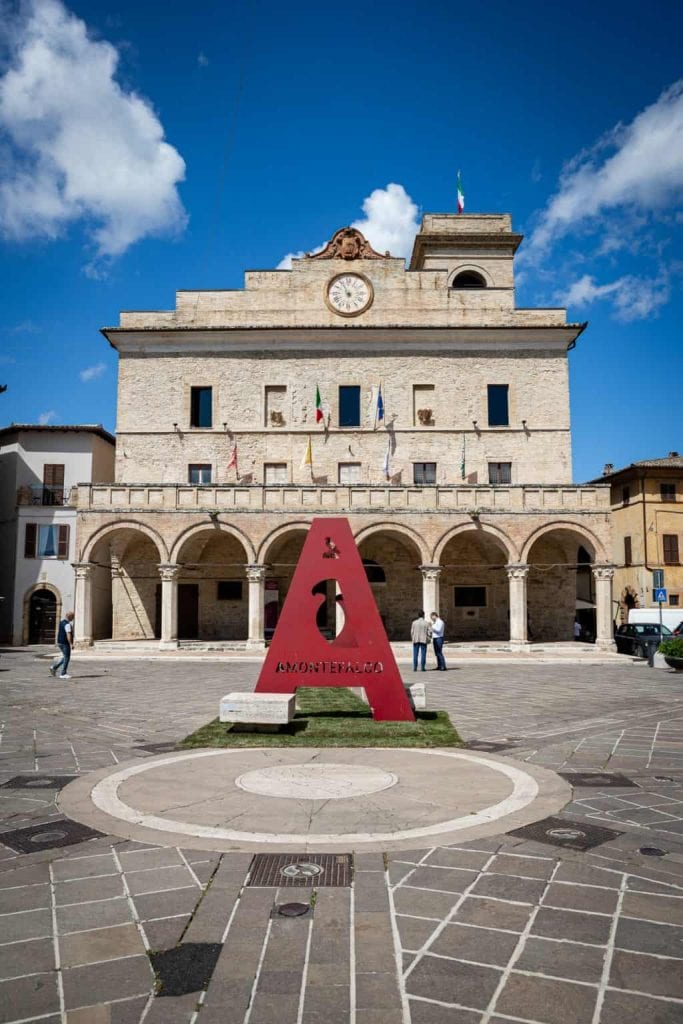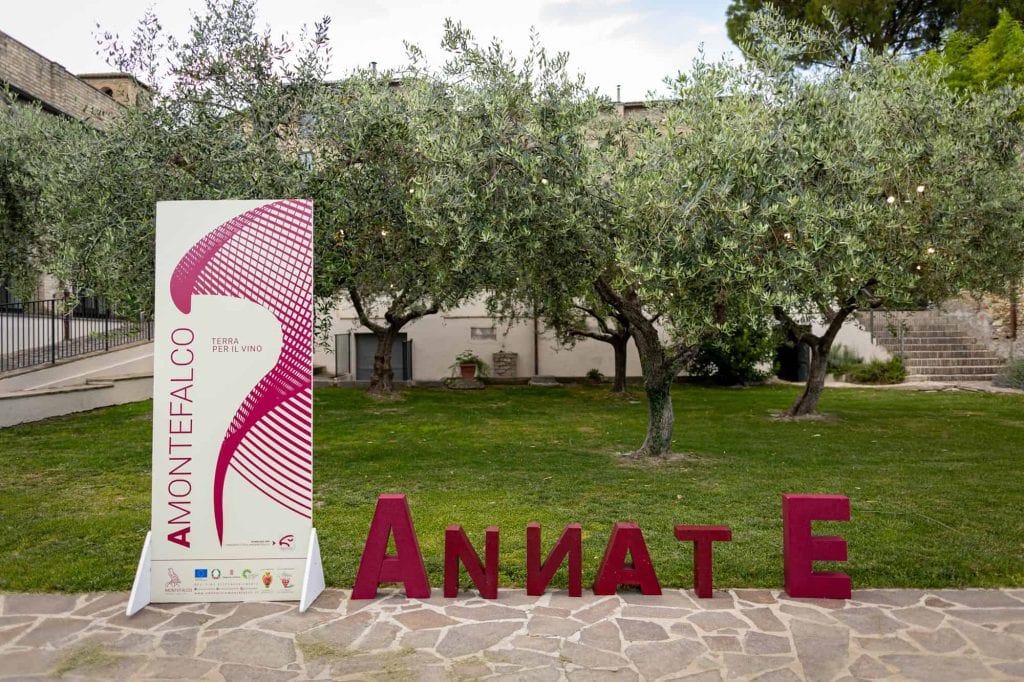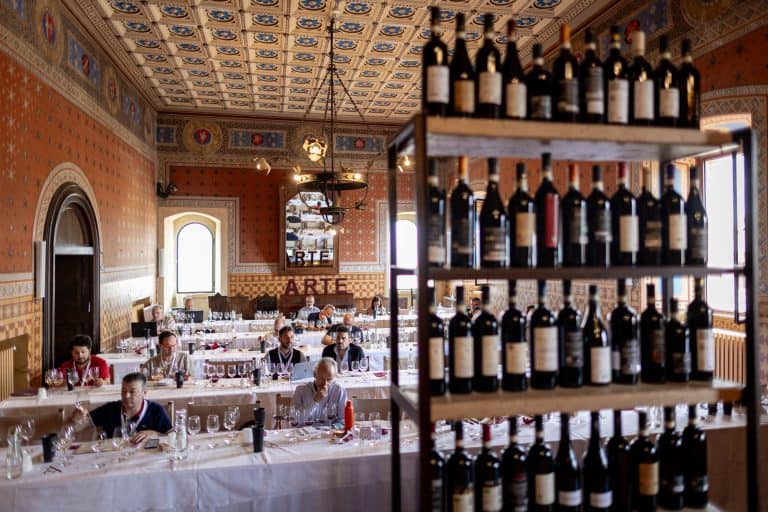A year ago, we expressed satisfaction when we tasted the Montefalco wines in preview and realized that the style sought for some years had found its dimension, especially with the fortunate 2019 vintage of Sagrantino. More measured extractions, better use of wood (both in duration and type), and a result where the tannic imprint did not dominate the sip but was in complete harmony with sapidity and freshness. The 2020 vintage, also convincing from a climatic point of view, confirmed that the path taken a few years ago is the right one.
Not just Sagrantino
But, let’s not forget, speaking of Montefalco does not mean only talking about Sagrantino. Montefalco Rosso is growing exponentially, and it’s no coincidence that it’s the wine with the highest production (about 2.5 million bottles), but more importantly, it’s the wine that sells out first. The credit goes to Sangiovese and what it can express in this area, even when blended with Sagrantino or other authorized red grapes (including international varieties). Montefalco Rosso Riserva, however, seems unable to find its precise dimension, with production not exceeding 100,000 bottles. It might make little sense to focus on the more aged, structured version of a wine synonymous with freshness and drinkability (Rosso) unless a move is made to give it a distinct character and typicity. Here’s an idea: what if the Riserva were exclusively dedicated to native varieties, thus Sangiovese and Sagrantino, with the latter used in small percentages to avoid overlapping with any other wine from the region? This way, we could talk about three Montefalco reds, each with its characteristics, without unnecessary rankings between flagship wines and second-tier wines.

The whites are advancing
To these would be added the whites, confirming a versatile denomination: Montefalco Grechetto is joined by Montefalco Bianco, where Trebbiano Spoletino must be the protagonist for at least 50%. However, we know that the designated DOC for this variety is Spoleto, and it’s no coincidence that there are major moves to extend the Spoleto DOC to the entire Montefalco area (as we explain in the latest issue of Tre Bicchieri). Pending any regulatory changes, we can say that Trebbiano Spoletino enjoys an unprecedented state of grace, demonstrated not only by the quality of the 2023 and 2022 tasted but also by the various vinification styles, all capable of enhancing the grape's aromaticity and considerable sapidity. While we are satisfied with the young, fresh, and vibrant versions, we are also fascinated by the labels resulting from macerations (wisely managed) or the use of large barrels or amphoras for aging. Not to forget the sparkling wines made from the same grape: few for now, but very convincing and sure to have a bright future.

The 10 best wines tasted at anteprima Montefalco
We present 10 still wines and an outsider, a sparkling wine. The latter, unsurprisingly, is made from Trebbiano Spoletino, confirming a variety that can also yield excellent results when sparkling. There are three Sagrantino, all from the presented vintage (2020), three Montefalco Rosso, one Montefalco Rosso Riserva, and three Trebbiano Spoletino.
Montefalco Sagrantino Etnico '20 – Di Filippo
The nose is all about red fruit, with a spicy and sweet tobacco sensation preceding a mouth of great elegance. A very smooth entry, balanced tannin with the substance, final sapidity, and a depth of drink never constrained. Very balanced now, sure to improve over time.
Montefalco Sagrantino '20 – Lungarotti
The great family of Umbrian wine gets us accustomed to more and more centered Montefalco alongside the great Torgiano they produce. The 2020 offers a delightful nose with notes of currants and raspberries, plus a touch of earthiness, while the mouth surprises with the grain of the tannin: mature, soft, creamy. The rest comes from beautiful freshness and lots of sapidity.
Montefalco Sagrantino Il Bisbetico Domato '20 – Tabarrini
The latest addition to the Tabarrini house is the Sagrantino bearing this quirky name, referring to the particular variety. Very good are also the other two crus presented, but Il Bisbetico Domato stands out for its finesse, elegance, and harmony. A lively nose suggesting a bright palate playing on freshness, flavor, and smoothness. A small great masterpiece revealing much about the variety.
Montefalco Rosso Pomontino '21 – Tenuta Bellafonte
Predominantly Sangiovese with a dash of Sagrantino, the Montefalco Rosso from Bellafonte shows balance, elegance, and plenty of drinkability for a joyful wine that retains its character, even though its simplicity and smoothness make it a daily wine to be enjoyed (chilled) at various times of the day.
Montefalco Rosso '22 – Scacciadiavoli
Very young and fragrant, the Montefalco Rosso from Scacciadiavoli seemed one of the best in its category. It consists of Sangiovese, a good part of Merlot (25%), and a touch of Sagrantino. It smells of blackberries, wild strawberries, and has a hint of black pepper. On the palate, it’s fresh, with the right softness, the tannin is light and gives rhythm to the sip, driven by beautiful sapidity.
Montefalco Rosso Ziggurat '22 – Tenuta Castelbuono Lunelli
Despite its young age, the Montefalco Rosso from the Lunelli family stands out for its complexity and body. The Ziggurat offers a complex nose that certainly goes beyond fruit. Spices, a touch of undergrowth, and a slight sensation of spices, with a round, enveloping, creamy palate well balanced by a thin but lively tannin, beautiful sapidity, and an acid backbone that supports the structure.
Montefalco Rosso Molinetta Ris. '19 - Romanelli
Undoubtedly, the Montefalco Rosso Riserva we liked the most. Thanks to the excellent 2019 vintage, the Molinetta offers elegance, finesse, and textbook drinkability. The nose smells of red fruits, with a touch of geranium preceding a meaty and blood orange sensation. On the palate, drinkability is guaranteed by acidity and sapidity, complemented by a measured body and great balance.
Spoleto Trebbiano Spoletino Misluli '22 – Ninni
Only 600 bottles of this artisanal wine produced by Ninni. One of the few tasted that benefits from 10% Malvasia Lunga added to Spoletino. Aromatic herb scents, touches of chamomile, and ripe yellow fruit precede a fresh and sapid mouth, with good depth and an almost spicy finish.
Spoleto Trebbiano Spoletino Benvenuto '22 – Conti Fabio
Here too, there are about a thousand bottles, but the result is really surprising. A slightly rustic but charming nose thanks to notes of flint and Mediterranean herbs, followed by ripe yellow fruit and sweet spices. Broad and enveloping mouth, creamy on one side but with plenty of sapidity to contrast on the other. Tasty, very long finish with a touch of freshness that livens up the drink.
Spoleto Trebbiano Spoletino Vigna Tonda '21 – Antonelli
Until last year, it was Anteprima Tonda, now, since it comes from a particular and unique circular-shaped vineyard, it becomes Vigna Tonda. It’s one of the Trebbiano Spoletino proposed by Antonelli, resulting from a long but well-managed skin maceration. Complex nose with scents of beeswax, wildflowers, and yellow fruits, with a sapid and vibrant mouth, a touch of tannin giving rhythm to the sip. Very deep, flavorful, but very pleasant and clean finish.
Spumante Metodo Classico Giovanni Bartoloni Dedicato a te '20 – Le Cimate
First year for this sparkling wine resulting from bottle re-fermentation of Trebbiano Spoletino grapes and long time on the lees. The result is truly appreciable, both for the aromas (yellow fruit, field herbs) and for a mouth where the carbonic is well integrated with a substance bursting with final sapidity.


 Meloni: "Tariffs? If necessary, there will be consequences. Heavy impact on agri-food sector"
Meloni: "Tariffs? If necessary, there will be consequences. Heavy impact on agri-food sector" The Government honours the greats of Italian cuisine, from Bottura to Pepe. Massari: "Thank you, Meloni, the only one who listened to us"
The Government honours the greats of Italian cuisine, from Bottura to Pepe. Massari: "Thank you, Meloni, the only one who listened to us" "We must promote a cuisine that is not just for the few." Interview with Massimo Bottura
"We must promote a cuisine that is not just for the few." Interview with Massimo Bottura Wine was a drink of the people as early as the Early Bronze Age. A study disproves the ancient elitism of Bacchus’ nectar
Wine was a drink of the people as early as the Early Bronze Age. A study disproves the ancient elitism of Bacchus’ nectar "From 2nd April, US tariffs between 10% and 25% on wine as well." The announcement from the Wine Trade Alliance
"From 2nd April, US tariffs between 10% and 25% on wine as well." The announcement from the Wine Trade Alliance






